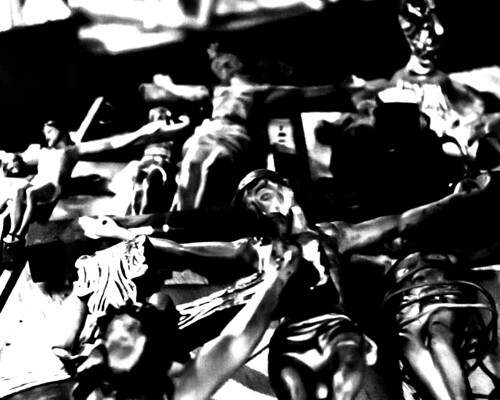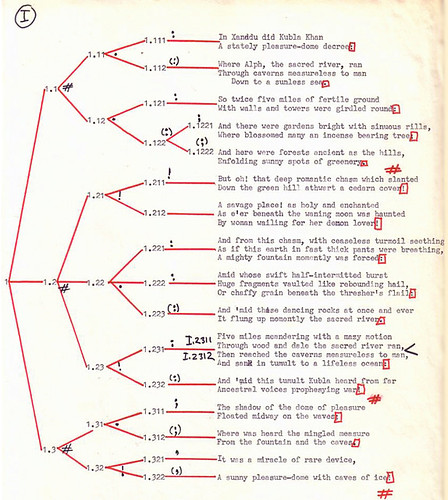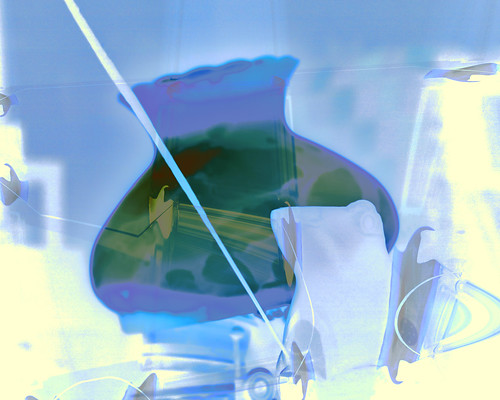Note, Sept 1, 2015: I've added three paragraphs about theory to a section, Characteristics of the Critical Sandbox.
* * * * *
The child is father to the man.
– William Wordsworth
Despite the wide range of literary study that has taken place under the rubric of the newer psychologies – cognitive science, evolutionary psychology, and neuroscience – these initiatives remain impoverished by their instance on functioning as a form of hermeneutic literary study. Since World War II academic literary criticism has used literature as a vehicle for the investigation of the human condition as seen across half the departments of the modern university [1]. All the cognitivists and evolutionists are doing is inviting more disciplines to the party. But it really is the same old party, not the new ones the evolutionists, on the one hand, and the cognitivists, on the other, are proclaiming.
Text as Sandbox
After World War II all academic literary criticism, at least in the American academy, came to agree on one basic modus operandi: The literary text is a mental sandbox in which the critic plays with his or her favorite conceptual toys. The New Critics used the idea of form to isolate the text from external influences, authorial intention, reader affect, and history. Because their conceptual toys – the ideas of ambiguity and paradox coupled with humanism (secular or Christian) – were invisible as such, they could present this as an act of austere purification in which messy value judgments and textual entanglements could be left behind.
Once the New Critics had thus transformed the text into an intellectual testing ground, a sandbox, other critics brought in more obtrusive toys: psychoanalysis, phenomenology, Marxism, structuralism, deconstruction, feminism and the other isms, and now cognitive science and evolutionary psychology. The new historicists have been fighting a highly successful rear-guard action by bracketing all theory toys and privileging a somewhat different set of toys, non-literary texts roughly contemporaneous with the texts under examination. At various points along the way the new set of toys would be brought online through a rhetoric of revolution and renewal, but the basic procedure remained the same: declare the sandbox to be liberated, toss out the old toys and bring in the new. Same sandbox, new toys.
This modus operandi was underwritten by a tacit agreement that any reading of a text was legitimate as long as it was supported by a suitable rationale, of which there are now many kinds. This professional courtesy inevitably led not merely to a multiplicity of readings, but to divergent and contradictory readings. Some critics saw this as evidence of the richness of canonical literary texts while others saw it as evidence of epistemological and methodological inadequacy. The latter have argued their case from time to time, but have yet been able to inspire a discipline-wide austerity program that has narrowed the range of legitimate readings to one per text. They’ve had little choice but to agree to the same old unwritten tacit agreement: Let 10,000 flowers bloom.
Thus much of the practical criticism produced by these most recent revisionists reads like 1950s humanist criticism but with a different set of tropes, motifs, and themes. Thus, in a review of an anthology of Darwinist literary criticism [2] Steven Pinker offered this observation about Joseph Carroll’s analysis of Pride and Prejudice [pp. 166-167]:
Carroll dissects the novel with skill and verve, and will make many readers wish that they had had him as their college English prof. Nonetheless, one is left wondering how essential the evolutionary biology is to his insights. The mating criteria that obsess the Bennett women may reflect universal impulses, but the specifics of the novel depends on the way that these impulses were exaggerated and codified in their time and culture. Today, a depiction of a contemporary middle-class family that worried aloud about finding wealthy husbands for the daughters, and about their being disgraced by a daughter running off with the son of a steward, would elicit guffaws, not a flash of recognition. In Pride and Prejudice, to be sure, these worries are set in tension with other concerns, but a skeptic could say that the tension is between individual and cultural demands, not individual and evolutionary ones.
That certainly accords with my own impression of Carroll’s work, and that of others as well, such as Brian Boyd’s treat of Iliad and Horton Hears a Who in The Origin of Stories [3].

















![[Portrait of Louis Armstrong, Carnegie Hall, New York, N.Y., ca. Apr. 1947] (LOC)](https://farm5.staticflickr.com/4091/4843734010_f330d5fc6b.jpg)













